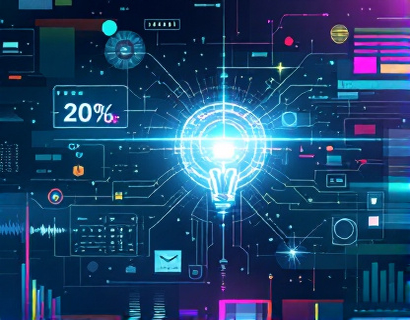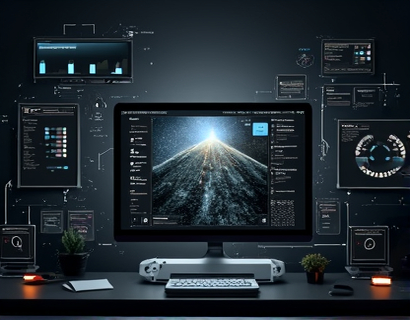Empowering Lifelong Growth: Accessible Educational Resources and Interactive Learning Tools
In today's rapidly evolving world, the pursuit of knowledge knows no bounds. The traditional boundaries of education are being redefined, embracing a more inclusive and dynamic approach that caters to students and lifelong learners alike. At the heart of this transformation lies the availability of accessible educational resources and interactive learning tools. These resources are not just about acquiring information; they are about empowering individuals to embark on a continuous journey of personal growth and intellectual exploration.
The digital age has ushered in an unprecedented era of learning opportunities. A vast digital library of educational materials is now at our fingertips, offering a rich tapestry of articles, e-books, and interactive courses. This comprehensive collection is meticulously curated to support and enhance the educational path of anyone eager to learn. The goal is to foster a deep-seated passion for lifelong learning, encouraging individuals to explore new subjects, deepen their understanding, and expand their horizons.
Accessible Learning Resources
Accessibility in education is crucial for ensuring that everyone, regardless of their background or abilities, can benefit from the wealth of knowledge available. Accessible learning resources are designed to be usable by as many people as possible, including those with disabilities. This inclusivity is achieved through various means, such as providing text alternatives for non-text content, ensuring compatibility with assistive technologies, and offering adjustable text sizes and colors.
One of the key advantages of accessible educational resources is that they break down barriers, allowing a broader audience to engage with the material. For instance, audiobooks and screen reader-friendly texts enable visually impaired learners to access content that would otherwise be out of reach. Similarly, subtitles and transcripts for video content make it easier for those with hearing impairments to follow along. These adaptations not only enhance the learning experience but also promote a more equitable educational environment.
Interactive Learning Tools
Interactive learning tools are revolutionizing the way we engage with educational content. Unlike passive consumption of information, interactive tools actively involve learners in the learning process, making education more engaging and effective. These tools can range from simple quizzes and interactive simulations to complex virtual labs and gamified learning experiences.
Interactive simulations, for example, allow students to explore complex concepts in a hands-on manner. In a virtual chemistry lab, learners can conduct experiments, observe reactions, and understand the underlying principles without the need for physical equipment. This not only makes learning more enjoyable but also helps in retaining information better. Gamified learning platforms take this a step further by incorporating game elements such as points, badges, and leaderboards, which motivate learners to progress and achieve their goals.
Personalized Learning Paths
One of the most significant advantages of digital educational resources is the ability to tailor the learning experience to individual needs. Personalized learning paths ensure that each learner can progress at their own pace, focusing on areas where they need improvement and advancing quickly in subjects they excel in. This customization is made possible through adaptive learning technologies that analyze a learner's performance and adjust the content accordingly.
Adaptive learning platforms use algorithms to identify knowledge gaps and provide targeted exercises and resources to address these gaps. For instance, a student struggling with algebra can receive additional practice problems and explanatory videos, while a student who has mastered the topic can move on to more advanced concepts. This personalized approach not only enhances learning outcomes but also boosts confidence and motivation.
Community and Collaboration
Learning is often a social activity, and the best educational experiences are those that foster a sense of community and collaboration. Online platforms that offer accessible educational resources often include forums, discussion boards, and collaborative projects that bring learners together. These features enable students and lifelong learners to connect, share ideas, and learn from one another.
Joining a community of like-minded individuals can be incredibly enriching. Learners can seek guidance, offer support, and engage in meaningful discussions that deepen their understanding. Collaborative projects, such as group research assignments or peer-reviewed essays, encourage teamwork and critical thinking. These interactions not only enhance the learning experience but also build a network of peers who can continue to support each other long after the course has ended.
Continuous Access to Updated Content
The world of knowledge is constantly evolving, and educational resources must keep pace with these changes. A robust online library ensures that learners have continuous access to updated and relevant content. This is particularly important in fields that are rapidly advancing, such as technology, science, and medicine. Regular updates to the curriculum keep learners informed about the latest developments and trends, ensuring that their knowledge remains current and applicable.
Moreover, the ability to access a wide range of topics and subjects means that learners can explore interdisciplinary connections and broaden their perspectives. For example, a student studying environmental science can delve into related fields like economics, politics, and sociology, gaining a more holistic understanding of complex issues. This interdisciplinary approach is essential for developing well-rounded thinkers who can tackle multifaceted challenges.
Support for Diverse Learning Styles
Every learner has a unique way of processing and retaining information. To cater to this diversity, educational resources should offer a variety of formats and delivery methods. Text-based articles, visual aids like infographics and videos, auditory materials such as podcasts, and hands-on activities all play a role in creating a comprehensive learning experience.
For visual learners, infographics and video tutorials can make complex concepts more digestible. Auditory learners benefit from podcasts and audiobooks that allow them to absorb information while on the go. Kinesthetic learners, who learn best through doing, can engage with interactive simulations and hands-on projects. By providing a mix of these formats, educational platforms ensure that all learners can find the methods that work best for them.
Motivation and Goal Setting
Lifelong learning thrives on motivation and clear goals. Interactive learning tools often include features that help learners set and track their progress towards specific objectives. Goal-setting functions can range from simple checklists to more sophisticated progress tracking systems that provide insights and recommendations based on the learner's achievements.
Motivation is a key factor in sustaining the learning journey. Platforms can incorporate elements such as achievement badges, progress charts, and personalized feedback to keep learners motivated. Celebrating milestones and providing encouragement can make the learning process more rewarding and enjoyable. Additionally, connecting with a community of peers who share similar goals can provide a sense of accountability and support.
Lifelong Learning as a Lifestyle
Embracing lifelong learning as a lifestyle involves cultivating a mindset of continuous curiosity and openness to new experiences. Accessible educational resources and interactive learning tools play a pivotal role in nurturing this mindset. By making learning convenient, engaging, and rewarding, these resources encourage individuals to view education as an ongoing journey rather than a finite process.
Lifelong learners are not only better equipped to adapt to changes in their personal and professional lives but also contribute to a more informed and innovative society. The ability to stay curious and keep learning is invaluable in a world where new challenges and opportunities emerge constantly. Educational platforms that support this lifestyle provide the tools and environment necessary for individuals to thrive.
Conclusion
In conclusion, the availability of accessible educational resources and interactive learning tools represents a significant step forward in democratizing education. These resources empower students and lifelong learners by providing a rich, personalized, and engaging learning experience. By fostering a love for learning and continuous growth, they help individuals unlock their full potential and contribute to a more knowledgeable and capable society.
Embracing these tools and resources is not just about acquiring knowledge; it's about embarking on a transformative journey of personal and intellectual development. Whether you are a student starting your educational path or a lifelong learner seeking to expand your horizons, the digital library of educational resources offers a wealth of opportunities to enrich your learning experience.










































